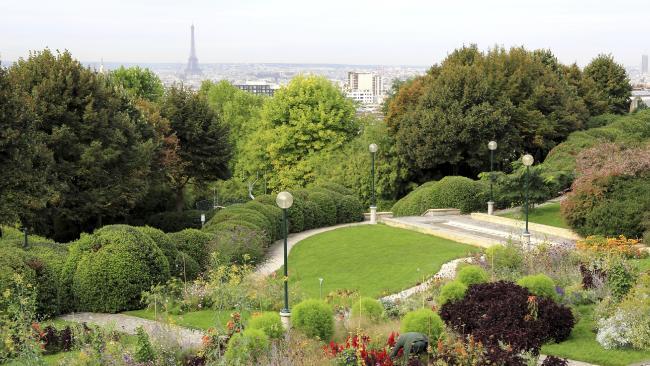A visit to Paris logically includes visits to the fabled sites, but these tell little about the city’s beating heart.
A stroll around the Belleville area offers new insights. It may not be the most fashionable area of Paris, but is one of the most interesting. Few tourists come, whereas bumper-to-bumper tour buses disgorge those who must see the wedding-cake Sacre Coeur nearby.
Take the metro to station Couronnes on Line 2, preferably on a Tuesday or Friday morning to catch one of the liveliest and cheapest markets. All along the central corridor of streets Belleville and La Villette, locals go about their shopping. Fruit and vegetables, shoes, household items, herbs, perfumes, meat, underwear, fish, colourful fabrics, nuts, sandals, linoleum, olives, handbags and exotic imports are spread out for inspection on wooden counters. Arrive before 10am and avoid the real jostle. Vying vendors sing out prices; customers argue in many different languages.
Belleville sits on a hill, the highest in Paris, in the 20th arrondissement. Follow Rue des Couronnes to reach Belleville Park and then climb the stairs to the summit, follow the winding paths or continue along Couronnes and turn left into Rue du Transvaal. Along this street look out for Villa Castell, where director Francois Truffaut filmed the interior scenes of Jules and Jim, his camera often lingering on the sensual face of femme fatale Jeanne Moreau.
There are reminders of France’s history in the names of streets around the park. Transvaal and Botha recall the Boer War; other names mark the opium wars in China and the Greek War of Independence. Plaques on public schools tell of a traumatic grief — the cattle-wagon loads of Jewish children sent to concentration camps during World War II. Others speak of different sorrows. A park-wall plaque commemorates a bloody battle between the Versailles army and working-class Paris Commune in 1871. The last 147 Communards were shot against a wall in nearby Pere Lachaise Cemetery.
There is an imaginatively decorated belvedere at the top of the park. Here, before the area was incorporated into Paris, there were vegetable gardens, windmills, vineyards and illegal bars. Many of these were later cleared to make way for a gypsum quarry exploited to help build Georges-Eugene Haussmann’s broad boulevards, which “renovated” Paris and made a commune-style revolution more difficult.
From the belvedere there is a sweeping view of Paris. The main sights are unmistakeable — the Eiffel Tower, Notre Dame, the Louvre, Arc de Triomphe, Pompidou Centre — and there are no swarms of tourists. Underneath the belvedere a small museum called The House of Air educates about air pollution in Paris.
On the winding pathways among well-tended gardens, sunny mornings bring the dreamy turns of red rice-paper fans as Chinese women make their languorous, meditative tai chi movements to tinkling music.
On a fine day the park pulsates as children splash in the pools, families picnic on the grass or play football. Each morning a female voice calls out to the feral cats to come and eat. A wraithlike figure in black, hair over one eye, glances around. She enjoys talking about the underbelly of the park.
From the belvedere it is a short walk across to Rue de Belleville, which bisects this district — surely the most multicultural, with more restaurants and cuisines, than any other part of Paris. It has also witnessed, in the past 100 years, the most seismic population changes of any part of the French capital.
Source: The Australian











